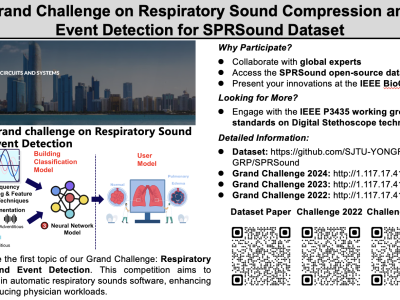
Respiratory diseases are major global killers, demanding early diagnosis for effective management. Digital stethoscopes offer promise, but face limitations in storage and transmission. A compressive sensing-based compression algorithm is needed to address these constraints. Meanwhile, fast-reconstruction CS algorithms are sought to balance speed and fidelity. Sound event detection algorithms are crucial for identifying abnormal lung sounds and augmenting diagnostic accuracy. Integrating these technologies can revolutionize respiratory disease management, enhancing patient outcomes.
- Categories:
